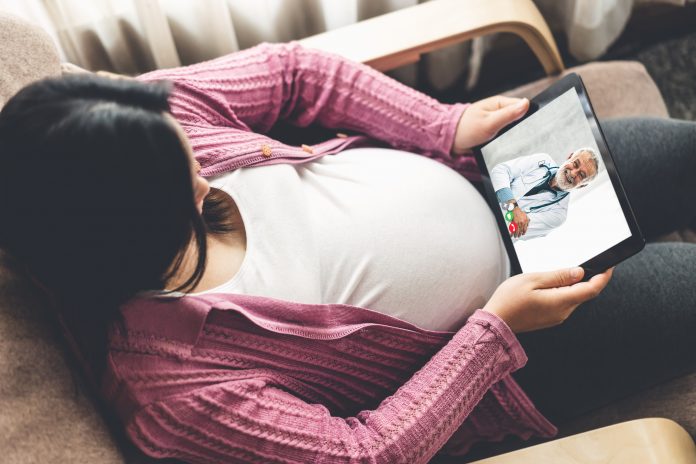Dr Owain Rhys Hughes, founder and CEO of Cinapsis, explores how remote GP consultations are providing opportunities for both patients and the NHS
At long last, General Practitioners have been untethered from their surgery desks and their patients spared the monotony of the waiting room. Thanks to the first major roll-out of remote working technology for the primary care sector, GPs can now consult with their patients, collaborate with their colleagues and action treatment plans from afar. Rather than treat this as a temporary solution to social distancing requirements, we must acknowledge and preserve this advancement in care delivery.
The catalyst to the NHS home working revolution was the first national lockdown, when Health Secretary Matt Hancock called for Primary Care to accelerate the transition to a ‘digital first’ service. A flurry of digital and healthtech innovators sprung forward to help the NHS achieve that goal, rapidly setting up messaging platforms and app-based advice and guidance services which could remotely connect clinicians – and the uptake was significant. According to NHS figures, in the four weeks preceding 12th April, over 70% of routine GP consultations were delivered remotely, and 26% face-to-face. This was an almost exact reversal of the same period in 2019, when 71% of appointments were face-to-face and 25% were remote.
In a matter of months, channels of communication were streamlined, obstacles to workflow removed, and swathes of much-needed time saved. A new era of remote digital healthcare has begun, and it’s patients who are the ultimate beneficiaries.
Benefits for doctors and patients alike
When GPs suddenly found themselves with no option but to make remote consulting work, the advantages quickly accrued. New digital tools, from image transfer features to automatic patient note updates, freed up time which could now be spent planning the most effective out-of-hospital treatment pathways for patients. Several previous causes for resistance to digital first care models were either resolved or proved false – including concerns over security and use of personal devices. By using end-to-end encryption or logging on to virtual environments, doctors could access the same features and information from their home computers than they could in their surgeries.
Patients also found virtual home-to-home GP consultations to be both convenient and impactful, evidenced by the continued high level of demand for remote appointments. It seems that few are mourning their deliverance from intimidating consultation rooms, parking conundrums and sacrificed lunch hours. It’s hardly surprising that from-home consultations are particularly popular amongst younger demographics, the digital natives comfortable with, for example, using their mobile to send their doctor photos of their dermatological condition, which the GP can then send on to a hospital consultant to get their expert second opinion in minutes.
Is the home working GP here to stay?
This autumn, NHS England is advising Practices to operate a ‘triage first’ model, whereby patients are only brought in to the surgery for an in-person appointment as a last resort. Doctors are being asked to use telephone, video and online consultations to support the triage process and the remote management of patients.
Of course, in-person consultations will still be needed under certain circumstances and for certain conditions. GPs recognise this, and are making provisions to ensure that in-person appointment slots and home visits continue to be an option – especially for vulnerable patients.
However, the return to the ‘old normal’ is extremely unlikely because doctors have found the shift to remote consulting both liberating and long overdue. Any new initiative which serves to help them manage their burgeoning workload and shrinking resources whilst also improving the quality of patient care is bound to be enthusiastically championed. There is also the recognition that making most consultations virtual will allow more time for those patients who still need face to face appointments.
The right tools for the job
The NHS is a powerful machine, but it only works if all of the parts can move in synchrony. If doctors have the right tools to communicate with one another, this synchronisation will come more naturally; saving not only time, but allowing more patients to be managed outside of hospital.
Correspondingly, the key to enabling effective home working for GPs is to equip them (and their colleagues in hospitals and community care services) with the tools for seamless collaboration. This looks like single sign-on platforms, linked to central NHS systems and accessible from mobiles, PCs, laptops and tablets. It means enabling communication through instant messaging, voice call or video call, secure image and document sharing. It means allowing advice and guidance to flow between hospital consultants and frontline primary care clinicians without endless email chains, delays going through switchboards or using clunky systems.
As the second wave of COVID-19, winter pressures and lockdown-related backlogs continue to pile pressure on the NHS, it’s more important than ever to champion the positive changes which have emerged from the crisis. We’ve never seen more powerful tech-enabled remote working and collaboration for doctors: this is progress to celebrate and to nurture. Ultimately, it will create more time to care for the most disadvantaged and help protect the vulnerable.











